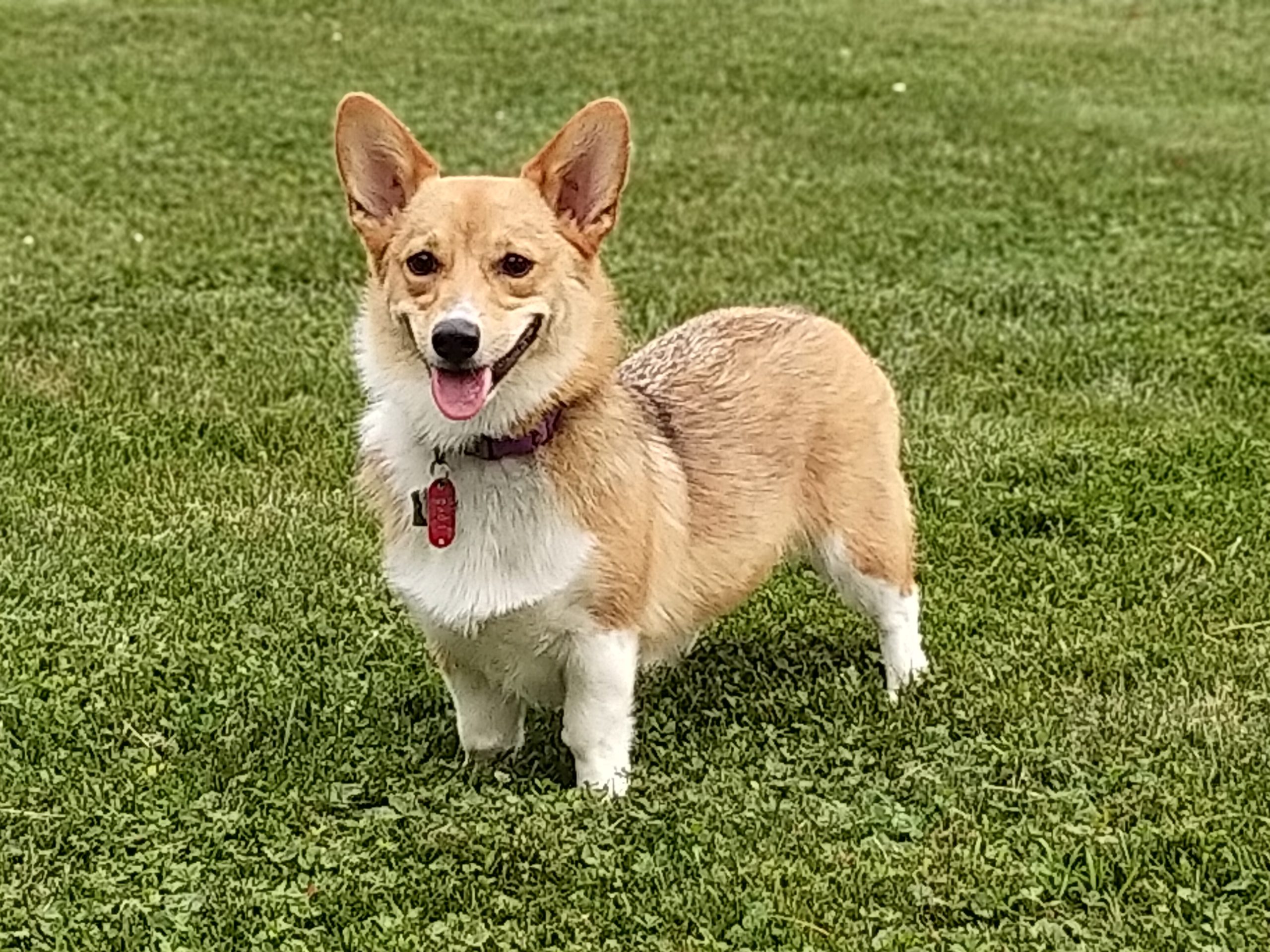To know for sure when to vaccinate the dog, or at what age it is worth performing castration (sterilization), the owner needs to know the age of his animal. The owner of a thoroughbred puppy just needs to look at the pet’s veterinary passport to find out the exact date of birth of the pet. What is really there, the day, month, and year of birth will be prompted by the breeder, who handed over his four-legged ward to the new owner, if the dog’s documents are suddenly lost.
But what about the owners of outbred animals whose age is unknown? In our article, we will try to figure out how to determine the age of a dog, based on the behavior of the pet and its exterior.
Determine the approximate age of the puppy
To begin with, let’s agree that you can only find out the age of the puppy approximately. Because, let’s say, two dogs of the same age can look and behave completely differently. One of them, for example, may have eyes open as early as 9-10 days of life, and the second may be blind even 20 days after birth. However, we are faced with the task of finding out not the exact age of the kitten baby, but the approximate one. To determine the age of your puppy, pay attention to the following: 
- The presence/absence of the umbilical cord – if the cord connecting the baby with the mother-dog looks completely “fresh” (ie wet, sticky), then the puppy is not more than 1 day old. The umbilical cord looks a little dry on the 2nd day, and on the 3rd it, as a rule, is already separated from the tummy of a small dog. That is, the umbilical cord signals that the puppy is newborn;
- Eyes – if a puppy baby is completely blind, then he is not more than 10-20 days old. If the eyes are not fully open, then the animal is not more than 1 month old. By the way, it is worth looking at the color of the peephole. If it is cloudy, gray-blue, then the baby is most likely not yet 1 month old. Clear eyes of any shade of brown (less often blue) is a sign that the dog is more than 1 month old. It is important to pay attention to the expression of the eyes. Does the animal look with curiosity and cunning? This means that he is at least 2.5-3 months old;
- Ears – in puppies under the crescent, the ears are soft, pressed to the head. At about 1-1.5 months, the ears begin to rise slightly. Ears become confidently erect in puppies older than 3-4 months, although in some dogs this occurs in 2-2.5 months;
- Teeth – All newborn puppies are toothless up to the crescent. At 2-3 weeks, the first white teeth erupt in dogs (fangs first climb: two on top and two on the bottom). If a dog has a whole set of milk teeth (28 pieces), then its age is about 3.5-4 months. And if the dog’s milk teeth fall out, then he is about 4.5-6 months. When an animal has all its molars (42 of them), the age is 10-12 months. By the way, it is easy to distinguish milk teeth from molars: they are small, there are large distances between them. While the molars are close to each other, they are relatively large in size;
- Coat – in puppies under 4-6 months old, the coat is fluffy, with a thin and soft coat. By about six months or a little earlier, the first molt begins, when thicker, stiffer hairs appear instead of puppy hairs;
- Movement and behavior – if the animal is constantly near the mother (sleeping, eating), then it is no more than 2 weeks old. By one month, dogs begin to move more. They walk, wag their tails, look at everything around, however, without much interest. Already at 2.5-3 months, the puppy begins to run, play naughty, look at people with interest. At this age, babies can be taught the first simple commands. By the age of 4 months, certain character traits are already clearly visible in dogs (for example, stubbornness, seriousness, “barking”, etc.). Kids actively run, bite while playing, and happily run after the toy. Puberty may begin in small breeds at 6 months, while large breeds mature by at least 8-10 months. Males at this age begin to write in an adult way, are interested in females Girls-dogs may become in heat, they become restless, strive to escape from the care of the owner;
- Barking – all babies are individual, but you can learn something about age by the ability to give a voice. If the doggie is filled with resounding barking or at least occasionally barks, then it is most likely more than 1.5-2 months old. It is believed that it is from this age that young animals begin to copy the behavior of adult dogs.
How to know how old an adult dog is
We tried to figure out how to determine the age of a puppy. What about an adult dog? There are also some subtleties here that will allow you to find out how many years the dog has lived approximately in the world: 
- Teeth – The easiest way to tell a dog’s age is by looking at the teeth. In short, the better the condition of the teeth (white color of the enamel, full teeth, tooth decay, etc.), the younger the dog. If we take a closer look at the teeth, we can come to the following conclusions:
- In dogs aged 1-2 years, teeth are not sharpened, without calculus and caries, white;
- By the age of 2.5-3 years, the lower incisors of dogs begin to wear out a little, by the age of 4 this happens to the upper incisors, but the color of the enamel is still white;
- The 5-year-old dog has rounded canines. The teeth themselves are no longer so white, there may be a yellow coating, small carious holes;
- At 6 years of age, the teeth are noticeably yellow and thin. The canines are short, sometimes almost flush with the incisors;
- Dogs over 8 years old have teeth that can lose, fall out, and often the bite becomes incorrect.
- Dogs of this age may have trouble chewing food;
- Gray on the face – most often, when a dog’s nose has gray hairs, then it is more than 6-7 years old. However, gray hair occasionally occurs in younger animals;
- Hair – in dogs after 7-8 years, the coat is dull and disheveled. Young individuals have no problems with a fur coat (if the animal is healthy);
- Skin – in animals older than 8-10 years, the skin loses its elasticity, it can be easily pulled off quite strongly (especially the skin on the stomach looks saggy in females that have given birth many times);
- Eyes – in dogs up to 6-8 years old, eyes are bright, full of life. Elderly dogs lose their shine and look tired. Very old animals are unlikely to be interested in sparrows chirping nearby or children’s laughter;
- Movement. If a young dog is active most of the time, then the animal is in years (in small breeds, old age begins after 10-12 years, and in large ones – at 6-8 years), quickly gets tired, instead of running, it chooses a calm walk. Older dogs usually spend the lion’s share of their time lying in a quiet and peaceful corner. The animal’s reactions are slowed down. Dogs over 8 years old almost always have at least minor joint problems, which is why there may be lameness, unsteadiness of gait;
- Weight – in older dogs, metabolism is slowed down, therefore, they are often overweight. Of course, young animals can have obesity, but pets aged 7 years and over are prone to it;
- The presence of senile diseases – in animals older than 7-10 years, such ailments are often found: heart failure, diseases of the motor system (osteoarthritis, arthrosis, dysplasia of the joints, etc.), renal ailments (pyelonephritis, nephrosis, renal failure, etc.), hearing impairment, visual impairment (cataract, glaucoma, etc.), gynecological problems in females (pyometra, oncology, etc.).
All of these signs will only help to roughly determine how old the dog is. In some cases, very young animals may have the same movement disorders. A specialist will be able to correctly find out the age of a dog by the teeth, of course, with some error. It is believed that good dental health is the most eloquent sign of a dog’s youth.
